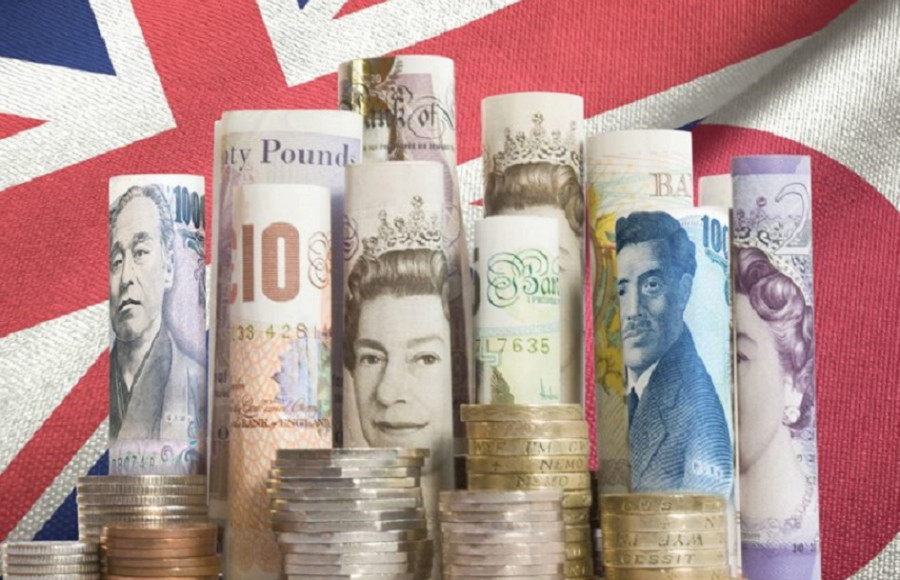The GBP/JPY currency pair has been showing increased volatility this week. For example, on Tuesday, October 3, the cross plummeted by more than 300 points in just a few hours. The main reason for such a rapid decline was rumors that the Japanese authorities had conducted currency intervention to strengthen their national currency. It's noteworthy that representatives of the Japanese government have kept the intrigue alive in this matter—they neither confirm nor deny the intervention.
Masato Kanda, Vice Minister of Finance for International Affairs, refused to define the criteria for "excessive movement" in the currency market. He stated that his department would not answer whether Japan conducted currency intervention or not. Japan's Finance Minister, Shunichi Suzuki, also declined to comment on this issue. According to him, there are many factors determining whether movements in the currency market are "excessive."

As for the criteria of "excessiveness" the main reference point here is the USD/JPY pair. In October, the price tested the psychologically significant level of 150.00, and this fact served as a trigger. The pair sharply reversed and dropped by several hundred points. Whether the Japanese authorities conducted currency intervention or traders in mass fixed profits, triggering a "domino effect," remains an open question. But in any case, the yen strengthened, albeit temporarily. The situation reminded traders of events from last year when Japan's Ministry of Finance resorted to currency intervention twice, resulting in the USD/JPY pair first dropping by one and a half thousand points and then (after some pause) another thousand points.
But let's return to our cross. Looking at the monthly chart of GBP/JPY, we can see that the pair reached its peak (186.74) in August, setting an eight-year price high. Then, the initiative shifted to sellers: over the past six weeks, the cross has gradually slid downward. This week, GBP/JPY bears set a new local low, marking it at 178.13. In one and a half months, the pair "stepped down" by more than 800 points, and this descent largely occurred before the rumors of currency intervention by the Japanese government.
In other words, the downward dynamics of GBP/JPY is driven not only (or not so much) by the yen's strengthening but by the weakening of the British currency. The Bank of England played the role of a "trigger" by effectively ending the current cycle of monetary policy tightening in August. It was at the August meeting that Bank of England Governor Andrew Bailey focused on the side effects of aggressive policy. He stated that the central bank had encountered "unpleasant surprises" in the previous reporting period, so when deciding on rates, the regulator's members "considered all existing risks."
The British pound reacted negatively to this rhetoric as it had a "conclusive" tone. Nevertheless, despite such rhetoric, the results of the September meeting of the English regulator were not predetermined. Many experts leaned towards a pause, but some currency strategists warned their clients that the Bank of England might opt for a 25-point interest rate hike because wage growth remained high and the core Consumer Price Index elevated.
Contrary to the hawkish expectations of some analysts, the Bank of England maintained the status quo. Out of the nine members of the Monetary Policy Committee of the central bank, five voted against raising the interest rate. Additionally, the regulator lowered its GDP growth forecast for the UK (to 0.1%), expressed concern about the situation in the labor market (unemployment in Britain rose to 4.3% in September, marking the third consecutive month of growth), and noted that the country's production volume had decreased by 0.5%.
In other words, the central bank clearly signaled its intention to continue adopting a wait-and-see approach. Bailey indirectly confirmed this assumption. He stated that further tightening of monetary policy would be "required only if signs of more sustainable inflationary pressure emerge."
It's worth noting that the Bank of Japan also implements an ultra-loose monetary policy. Recent rumors of a possible adjustment to the QQE (Quantitative and Qualitative Monetary Easing) were not confirmed—BoJ Governor Kazuo Ueda denied these speculations. According to him, the central bank will maintain its current policy until inflation falls to the target level (while the Consumer Price Index remains stuck around the 3% mark).
Nevertheless, despite the positions stated by the central banks, in the current circumstances, GBP/JPY bears have a significant advantage: if the yen weakens further, the Japanese authorities will apply a "stopper," either verbal or real. It's important to note that after a downward pullback, the USD/JPY pair has returned to the 149 level. The price is again heading towards the "forbidden zone," which is the 150.00 level.
In such conditions, long positions on the GBP/JPY pair appear risky. Meanwhile, selling on upward pullbacks seems quite attractive, given the position of the Japanese Ministry of Finance and the dynamics of the USD/JPY pair. The nearest and currently the primary target for the downward movement is the 180.00 level, which is the lower Bollinger Bands indicator line on the daily chart.























